If you're facing the tough task of drafting a termination letter due to unsatisfactory performance, you're not alone. Many employers find themselves in this position and want to ensure the message is clear yet empathetic. It's essential to balance professionalism with a sense of understanding, as these conversations can deeply impact the individual involved. Ready to learn how to navigate this sensitive topic with the right words? Read on for a comprehensive guide and sample letter!

Clear identification of the employee
In the workplace, unsatisfactory performance can lead to difficult decisions regarding employee termination. A clear identification of the employee is essential in any formal communication concerning their job status. This includes the employee's full name, employee ID number, and specific role within the organization. For instance, Jane Doe, Employee ID #12345, has worked as a Sales Associate since January 2020. It is critical to reference performance-related metrics or incidents, such as consistently missing sales targets by 30% over the last quarter, and any prior warnings or discussions held regarding performance issues. This identification provides a basis for transparency, ensuring the employee understands the context and reasons behind the termination decision.
Specific performance issues and examples
Unsatisfactory job performance can lead to termination if specific issues are not addressed. Common performance concerns may include consistent failure to meet sales targets (e.g., missing monthly quotas by 20% for three consecutive months), frequent tardiness (arriving late more than 10 times in a quarter), and poor quality of work (submitting reports with multiple errors, impacting team efficiency). Additionally, lack of communication (failing to respond to emails within 24 hours) and inadequate teamwork (not collaborating with colleagues on essential projects, resulting in missed deadlines) contribute to performance dissatisfaction. Documenting these instances helps clarify the reasons behind termination, ensuring the process aligns with company policies and supports a fair evaluation.
Reference to previous warnings or discussions
In the realm of employment practices, unsatisfactory performance often leads to difficult conversations and potential termination of an employee's contract. Businesses typically document discussions regarding performance issues, which may include verbal warnings or performance improvement plans introduced over the course of several months. For example, multiple written warnings highlighting specific deficiencies, such as failure to meet sales targets (for instance, achieving only 60% of the required quota in Q2), can serve as critical reference points. These discussions often occur during scheduled reviews or one-on-one meetings within a specific department, like sales or customer service. Ultimately, a decision to terminate may be based on the continued failure to improve despite adequate support and guidance provided by management, effectively culminating in a legal and ethical conclusion to the employee's tenure with the organization.
Termination date and details
Unsatisfactory performance in the workplace can lead to termination, impacting both the employee and the organization. Specific reasons for this termination, such as failure to meet performance metrics (e.g., sales targets, project deadlines) or repeated issues in job responsibilities, play a crucial role. The termination date, often influenced by company policy or labor laws, marks the end of employment, which can occur after formal warnings or a performance improvement plan (PIP) has been issued. This process typically involves documentation outlining the concerns, meetings with HR as specified in the employee handbook, and ensuring the employee understands their rights regarding severance and final paychecks. In some cases, exit interviews may provide additional context for the employee's experience.
Information on final pay or benefits
Final pay statements for employees undergoing termination due to unsatisfactory performance are crucial. In many jurisdictions, regulations specify that terminated employees must receive their final paycheck promptly, often within a mandated timeframe (such as one pay period). This payment typically includes salary for hours worked, accrued vacation time, and any unpaid overtime, adhering to the Fair Labor Standards Act (FLSA) guidelines. Additionally, benefits such as health insurance under the Consolidated Omnibus Budget Reconciliation Act (COBRA) must be addressed, offering the option to continue coverage (usually for up to 18 months) at the employee's expense. Employers should provide a detailed breakdown of all payments and benefits in a clear document, ensuring compliance with relevant employment laws and fostering transparency throughout the termination process.
Letter Template For Unsatisfactory Performance Termination Samples
Letter template of notification regarding performance-based termination.
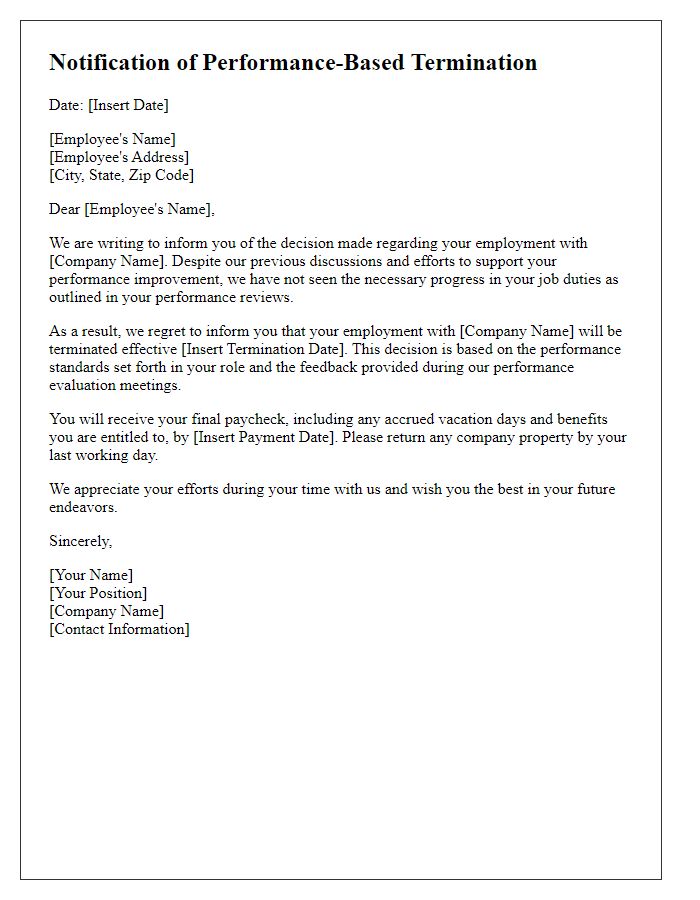
Letter template of employment termination for failure to meet expectations.
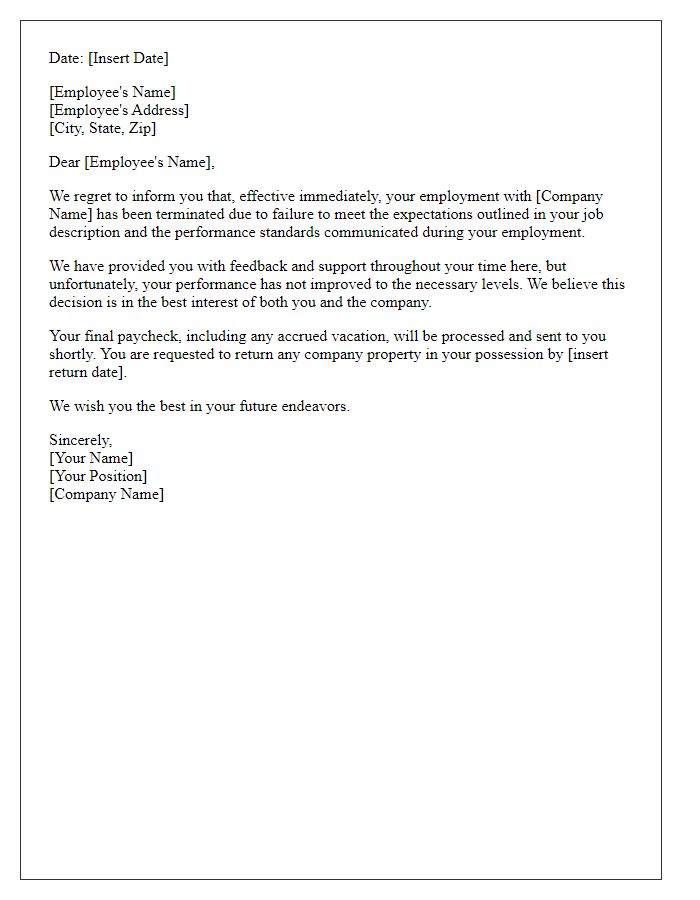
Letter template of separation from employment due to performance concerns.
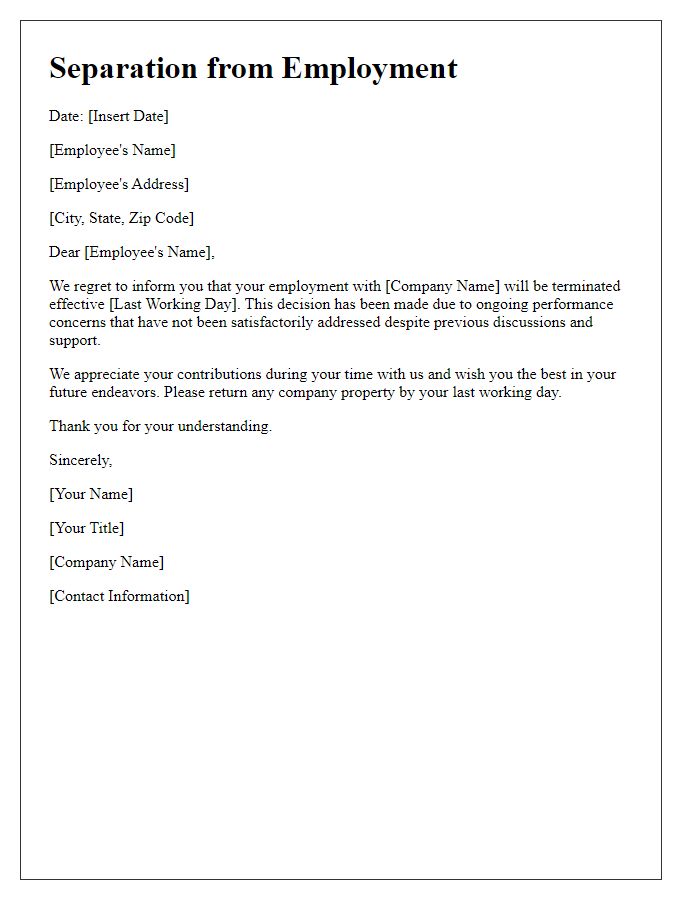
Letter template of notice of termination based on inadequate performance.
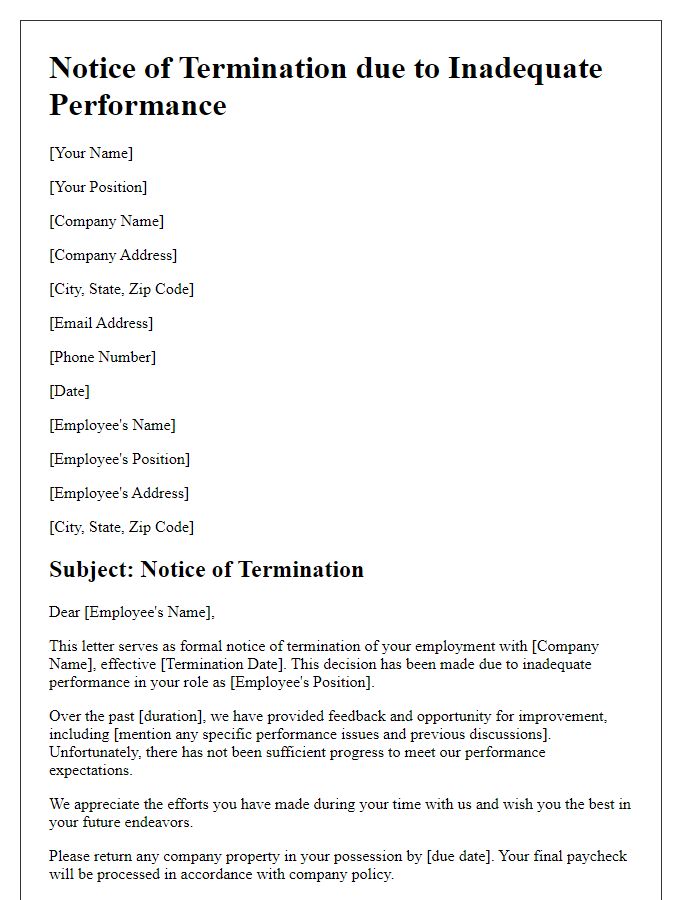

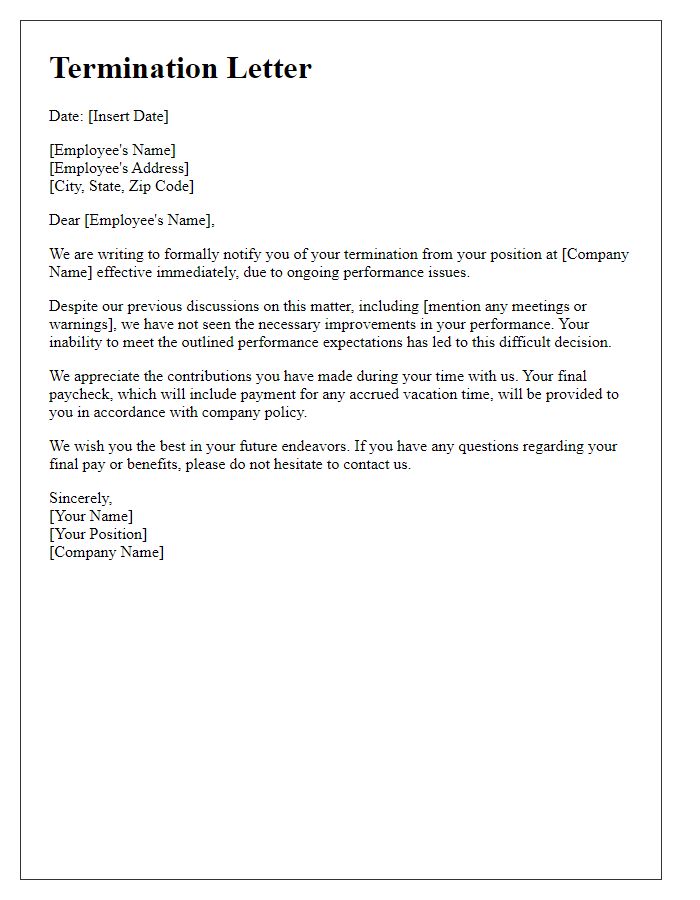
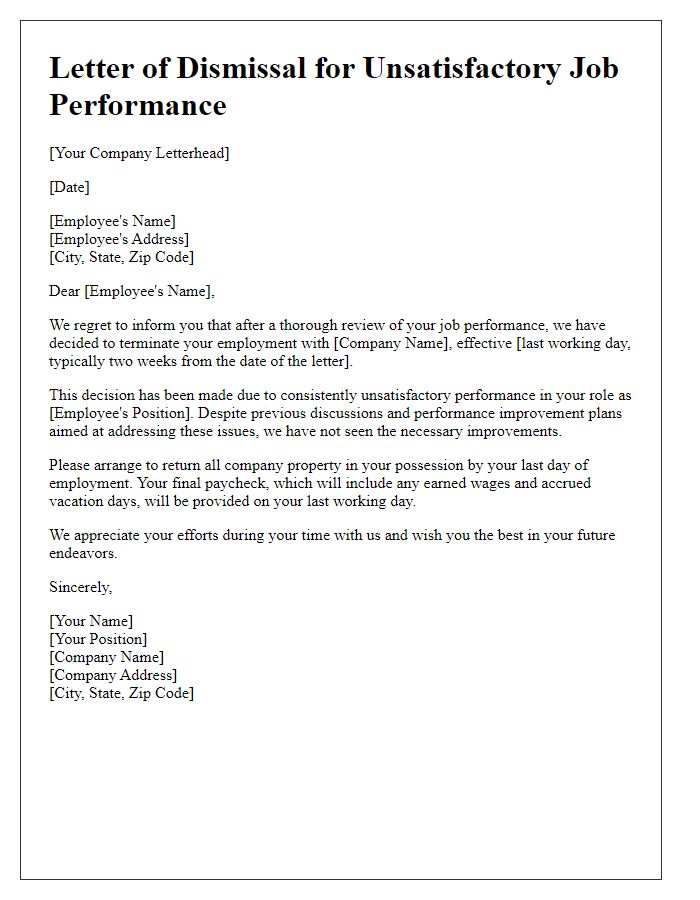
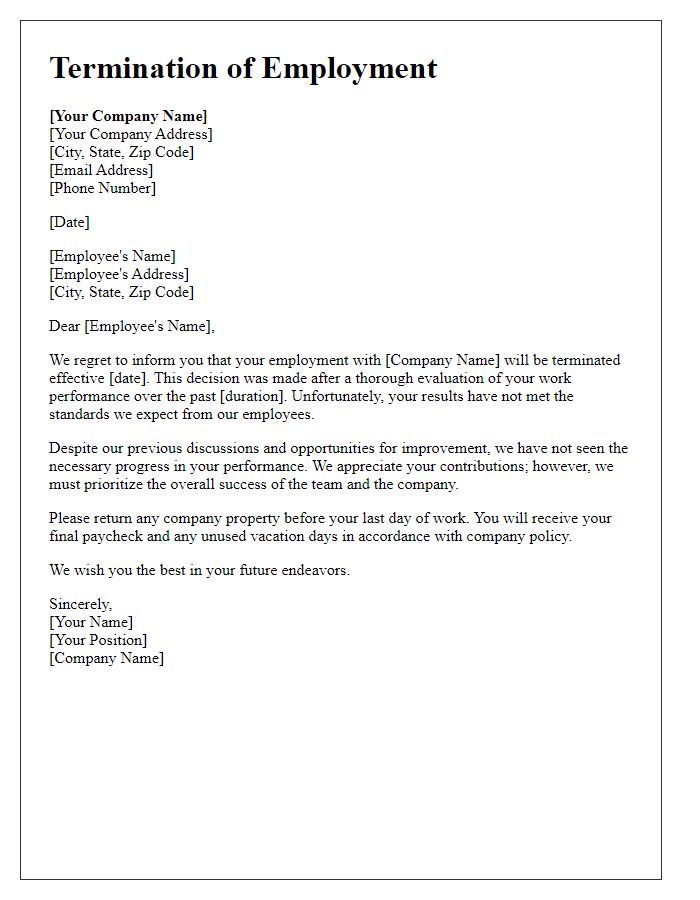
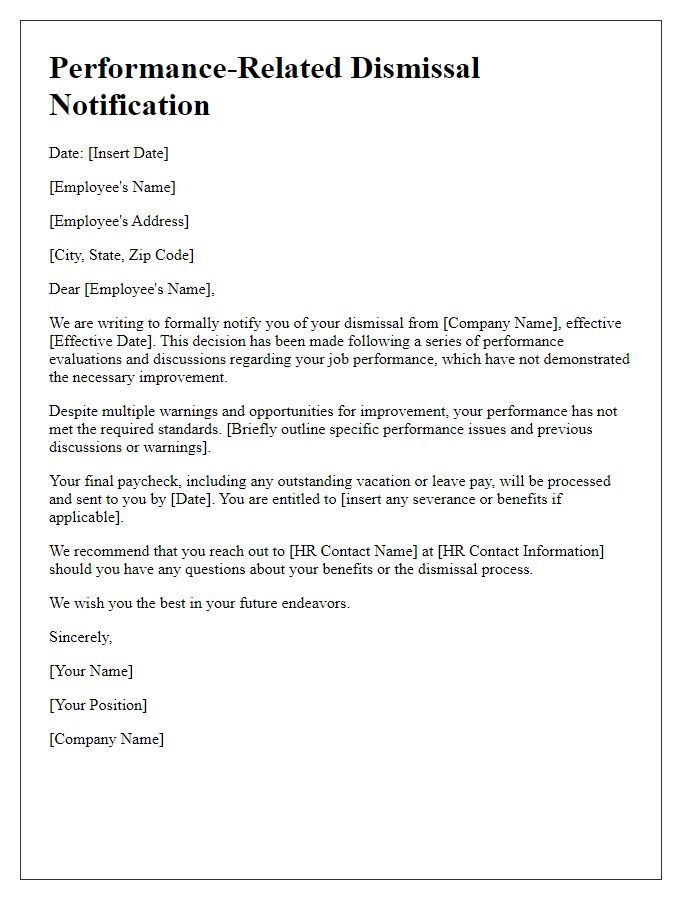
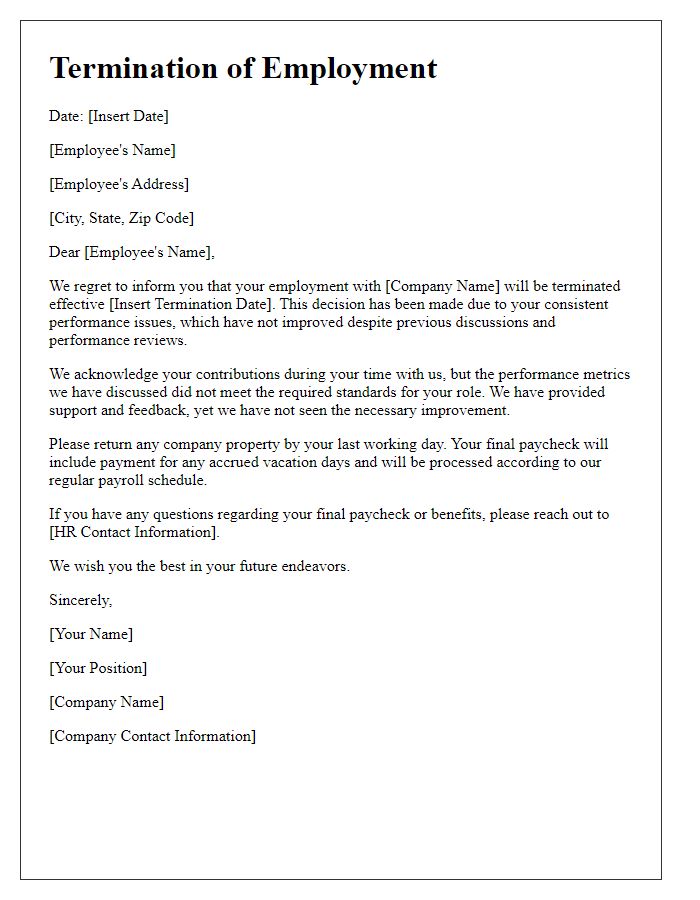
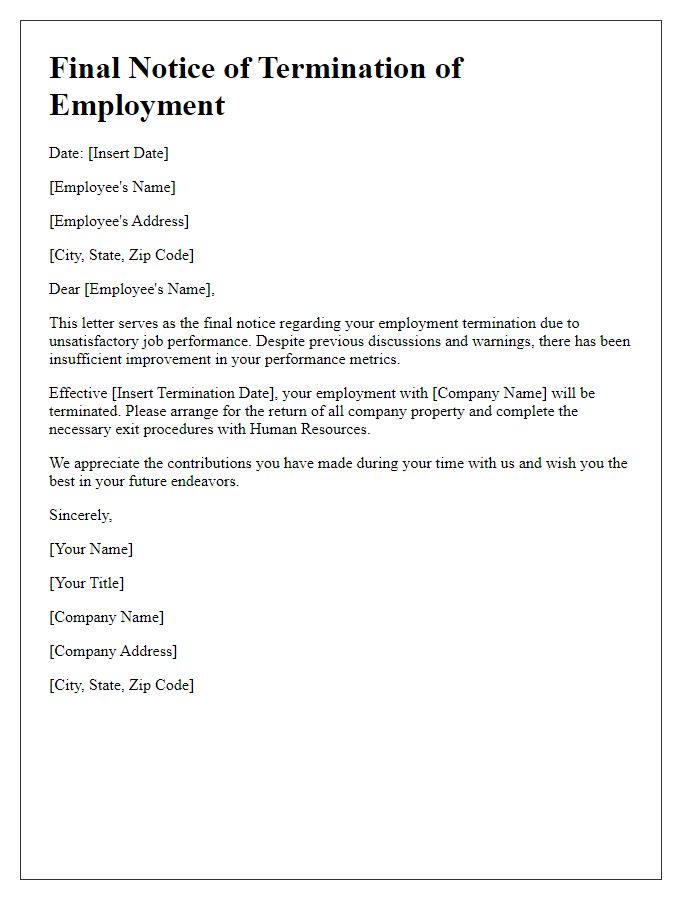


Comments